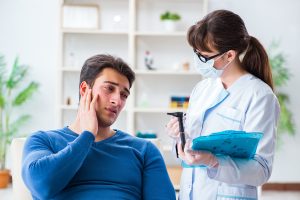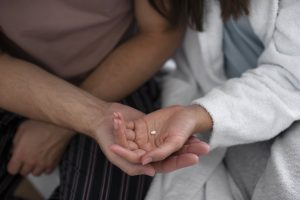Vaginal Yeast infection sores are a common problem that many people face. They can occur on any part of the body but often appear as a red, itchy rash on the skin. The yeast that causes this infection is known as Candida albicans.
Women are more prone to yeast infections than men because the female body provides a warm and moist environment for yeast growth. Moreover, specific birth control devices such as diaphragms and condoms can also increase the risk of infection because they alter the body’s pH.
Understanding Yeast Infections
A yeast infection is excess growth of the Candida albicans fungus. This fungus is present in small quantities in the human body and is usually kept under control by the immune system. However, certain factors can lead to an overgrowth of this fungus, resulting in the condition.
The most common symptom is a red, itchy rash found in the folds of the skin, such as the groin, armpits, or under the breasts. However, the rash may also appear on other body parts, such as the nails, mouth, or vaginal area. Often, the rash may accompany a burning or stinging sensation. If left untreated, a candida infection can lead to serious health complications.
Blisters and Sores
Blisters and sores are small lesions that can occur on the skin. They are usually filled with fluid, pus, or air. Blisters typically form when the outer layer of the skin is damaged due to an injury, infection, or chemical reaction. Sores, on the other hand, are open wounds that often crust over. They can be caused by infection, inflammation, or trauma.
Blisters and sores can occur on any part of the body. However, they are most commonly found on the hands, feet, and face. Both are uncomfortable and can be painful.
While blisters and sores are usually not serious, they can sometimes lead to more severe women’s health complications. Consult a doctor if you develop any of these lesions.
Causes of Sores in Yeast Infection
It is uncommon for yeast infections to develop into sores or blisters. However, in some cases, the condition can become quite severe and may even lead to blisters or sores. These blisters and sores usually affect people with weakened immune systems.
Sores can also develop if the vaginal infection spreads to other body parts. For example, if you have a sore in your genital area, it is important to see a doctor as this could signify the condition or a more serious condition, such as herpes.
Treatment Options for Yeast Infection Sores
Antifungal medications can treat yeast infection sores. These are available in creams, ointments, or oral tablets. Hydrocortisone cream can also relieve the itching and inflammation associated with this condition. Most of these products are available over the counter.
Your doctor may advise an oral antifungal medication if the situation is severe.
Common Symptoms of a Yeast Infection Sores
A red, itchy rash is the most common symptom of the sore. The rash is often accompanied by a burning sensation, typically during urination or sex. Other symptoms of a vaginal yeast infection sores include a thick, white, cottage cheese-like discharge from the vagina, swollen areas of the groin, sore throat or mouth, and swollen lymph nodes.

What Do Yeast Infection Sores Look Like?
Yeast infection sores can vary in appearance. They may be small or large, appearing on one or multiple body parts. The sores may also be accompanied by a burning or stinging sensation and are often red and itchy.
Do Yeast Infection Sores Pictures Tell The Whole Story?
Yeast infection sores pictures can give you a general idea of the condition. However, it is essential to remember that each person’s experience with the condition will be unique.
If you think you have this condition, you must see a doctor. This is because symptoms of vaginal yeast infections can be similar to those of other conditions. Therefore, only a doctor can give you an accurate diagnosis and provide you with the appropriate treatment.
How Long Do Sores Take to Heal?
After treatment, the sores usually heal within a few days to a week. However, this bacterial infection can sometimes become severe and take longer to heal. Therefore, you must consult a doctor as soon as you notice symptoms.
What to Do When Sores don’t Go Away
If your yeast infection sores do not improve with treatment, it is important to see a doctor. They will perform the necessary tests to rule out other, possibly more serious conditions and guide you on how to treat yeast infections.
Do You Have Yeast Infection Sores or Blisters?
It can be challenging to distinguish between sores and blisters. Since they are uncommon, you may not be sure where to look. However, a medical professional can diagnose whether you have sores or blisters. They will also provide you with the appropriate treatment.
Test Results: Sores or Blisters
There is no definitive test for diagnosing the sores or blisters. A doctor will often diagnose based on your symptoms and medical history. They may also prescribe tests, such as a skin culture, to rule out other conditions.
When to Contact a Medical Professional
Once you notice that you are developing symptoms of the condition, it is best to see a doctor. This is essential if you have never had yeast infections before, as the symptoms can be similar to those of other conditions.
You should also see a healthcare provider if your yeast infection does not improve with over-the-counter treatments or if it comes back after you have been treated.
Frequently Asked Questions
There is no certain answer to this question, as the blister treatment will depend on the underlying cause. However, antifungal medications are often used to treat blisters caused by a vaginal yeast infection.
The best way to prevent blisters from a vaginal yeast infection is to practice good hygiene and avoid contact with people with the condition. You should also avoid sharing towels, clothing, or other personal items with someone with the condition.





